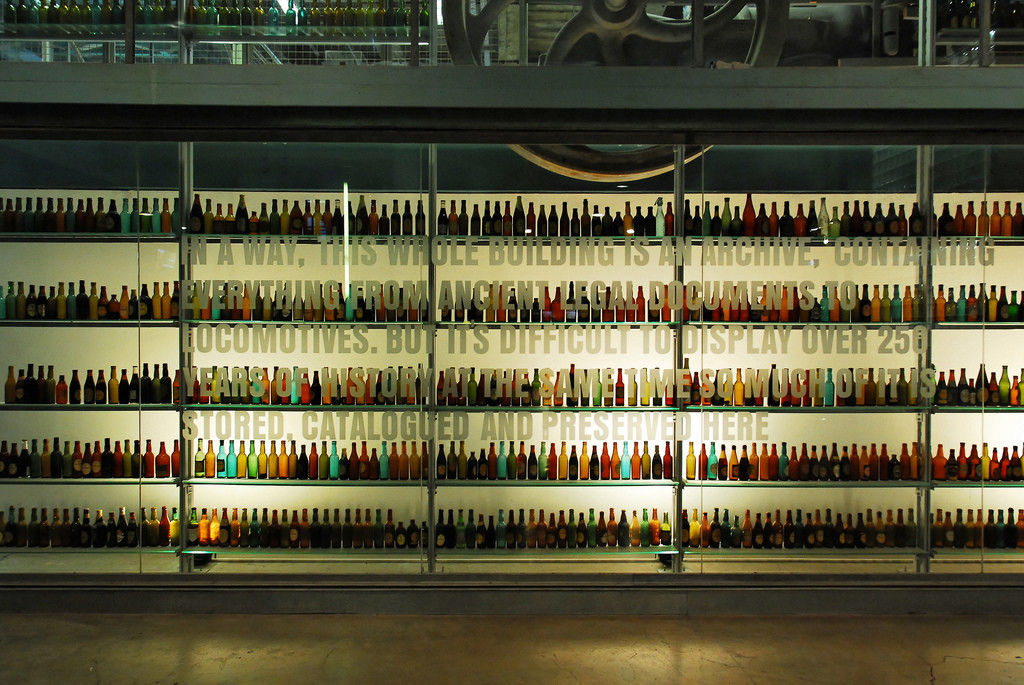Hop to it: Name our Beer!

Last week, we asked our readers for submissions to help name our crowd-sourced beer. Responses came fast and furious, through Twitter, email, and comments on last week’s article. Most readers followed the instructions set out, which were to provide a name and a brief description on why it was chosen. Some of you even provided a label! In case you need a refresher on how we made the beer or what it’s tasting like so far, you can go here and here, respectively. What follows are the names put forth by our readers, and a poll for you to vote for your favorite. The survey will be open for two weeks, so vote early, vote often, and let’s name this beer! Thanks to all those who submitted names, and thanks for voting.
[widgets_on_pages id=3]
Sidney Reilly’s Stout
Given that it’s a Russian beer that’s secretly British, this beer is a reference to the so-called “Ace of Spies,” Sidney Reilly. Reilly was part of the inspiration for James Bond, and is considered by many to be the 20th Century’s first super spy.
Kabrewstin Yar
A play on Kapustin Yar (now called Znamensk) — a Soviet-era rocket site just outside of Volgograd. Kapustin Yar is where Sputnik 1 and 2 launched from, and is known as “Russia’s Roswell,” thanks to all the experimental aircraft activity in the area.
Blackjack Stout
A reference to the TU-160 Blackjack, Russia’s long-range strategic bomber. It’s fast, it’s loud, and it’s designed to intimidate its neighbors.
War on the Hops
Pretty obvious, no?
Hanslav’s Stevedore Stout
The name is a portmanteau of “Hanseatic” and “Slavic,” referring to the trading union that dominated Baltic trade and a primary ethnic group of the region. Stevedores are dockworkers, specifically responsible for loading and unloading cargo. Though headquartered in Germany, the Hanseatic League connected London to St. Petersburg and many key ports in between. Suitably, I imagine this union shipped some Russian Imperial Stout during its later years, and the workers themselves must have enjoyed some after their shifts. For me, that image best captures a good beer: sipping them down with co-workers after a long day at work.
The Malt-a Conference
A nod to the Yalta Conference of 1945, where Stalin, Churchill, and Roosevelt met to plan out Europe’s return to normalcy post WWII.
Xenia Onathops
A reference to Xenia Onatopp, the Bond villainess known for taking extreme pleasure in killing.
Romashkino
The largest Russian oil field, Romashkino is currently 85% depleted.
Charge of the Stout Brigade
A reference to the infamous “Charge of the Light Brigade” led by British cavalry officer Lord Cardigan against Russian forces during the Crimean War. The charge was conducted in the face of withering fire, and had little strategic effect. Immortalized forever in an Alfred Lord Tennyson poem of the same name.
Inkerman Stout
At the battle of Inkerman (Crimean war), Britain and France, despite being outnumbered, defeated Russian troops. Because of a thick fog, the battle was fought at the tactical level, thus earning the name of “the Soldier’s battle.” I still haven’t tried the beer that has to be named, but from the description, I think of it as the kind of beer a veteran of Inkerman would have loved to sip. As Russian Imperial stouts were sold in Eastern Europe and in the Baltic states, a pint of RIS would have tasted like home to these soldiers.
Bear-Chested Imperialist Stout
A number of Russia-themed references going on here, most of which are directed at Putin.
Putin’s Imperial Stout
“Enjoy this stout one sip at a time just as I devour my neighbors one bite at a time” accompanied by a cartoonish picture of a shirtless Putin. Your description of the process of making the beer, the way it must age, and the fact that it’s a “sipper” and not a “chugger” have parallels to the way Putin is acting in Eastern Europe and Ukraine specifically.
Tula Arsenal Stout
A reference to the Tula Arms Plant, one of the oldest arsenals in Russia. It has remained open since its founding in 1712 by Peter the Great.
Stout Petersburg
A play on St. Petersburg, Russia’s city on the eastern Baltic Sea.
Opbeerichnina
A play on the name of Ivan the Terrible’s secret police.
Cate the Great’s Storm Stout
A reference to Catherine the Great, Russia’s longest-ruling and most-revered female ruler.
Izmail Stout
A reference to the Siege of the Izmail, where Russian soldiers wiped out a Turkish garrison in the city’s fortress, after the Sultan boasted that the fortress was impregnable. The Russian victory over the Ottomans sealed the Russo-Turkish war, and inspired Russia’s first national anthem, “Let the Thunder of Victory Sound.”
Fuel of War
A reference to the beer’s oil-like appearance, and the sustenance we at War on the Rocks will derive from drinking it.
Tsar Bomba Stout (King of Bombs)
Named after the AN602 hydrogen bomb, the most powerful nuclear weapon ever detonated.
And these are punny names submitted with no explanation:
Cream of the Kremlin
Donetsk, Don’t Tell
Suvorov’s Bayonet
Tsar Tstout
The Hunt for Red Octo-beer
Russian Safety Brief
Now that you’ve seen the nominations, it’s time to vote!
[socialpoll id=”2279048″]
Alex Hecht is editor of Molotov Cocktail. He works as a Security Analyst in Washington, DC. Before working for the man, he managed the Gibson, a cocktail bar in DC’s U Street corridor. Alex’s life is admittedly mellower now, but his liver probably thanks him for that.
Photo credit: Tinou Bao

